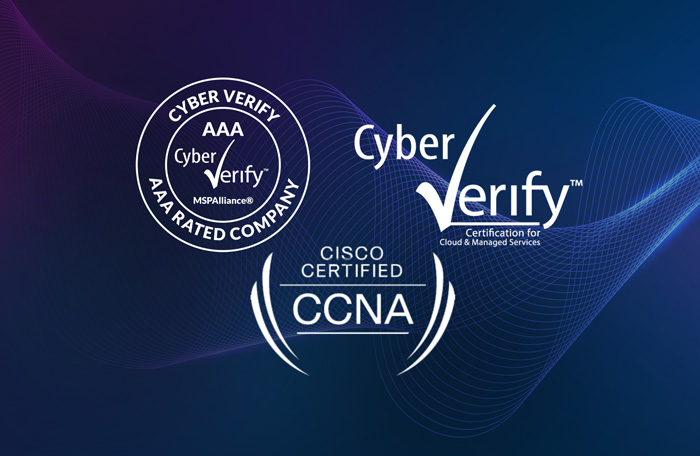Cybersecurity has become exponentially more difficult over the past few years due to the increased volume and sophistication of threats, a growing attack surface and a global shortage of security professionals. To address this perfect storm of challenges, more organizations are increasing their investments in security operations centers (SOCs).
Cyberattacks by notorious international hacking gangs such as the Lazarus Group, DarkSide, Lapsus$ and the Legion of Doom make headlines and strike fear into everyone responsible for network and data security. As menacing as these groups may sound, Cindy in sales and Eric in engineering likely pose more imminent threats.
The phish are biting. Learning to identify the common lures can help keep your organization from becoming the catch of the day.
The private space flight company SpaceX recently began launching its second-generation Starlink communication satellites into low-Earth orbit. It’s the first phase in a broader strategy that could change the way millions of people access the Internet.
It’s no secret that most cyberattacks are designed for financial gain — cybercrime generates trillions of dollars of income each year for threat actors worldwide. However, recent trends suggest that malware is increasingly weaponized to cause as much damage as possible.
As businesses around the world continue the transition to decentralized organizational structures, they are increasingly reliant on software-defined wide-area networks (SD-WANs) to keep everything connected. IDC analysts say more than 95 percent of enterprise organizations have deployed some form of SD-WAN or plan to do so within the next two years.
Despite the increased adoption of digital technologies for modernizing core business operations, millions of organizations still rely on analog telephone technology that’s more than a century old. Recent regulatory changes make that an increasingly impractical choice and will undoubtedly accelerate the transition to Voice-over-IP systems in the coming months.
Hybrid work models place a premium on effective communication and collaboration to link hyper distributed workforces, but research suggests inadequate solutions are compromising operations and creating dire bottom-line impacts.
Cost reduction has always been touted as one of SD-WAN’s great benefits, with the technology’s most ardent evangelists claiming companies can cut networking costs by 50 percent or more by using commodity broadband Internet connections instead of expensive MPLS circuits. Of course, your mileage may vary.
The Gulf of Mexico has long been one of the U.S.’s primary energy sources, accounting for significant shares of the country’s crude oil and natural gas production. It now also figures prominently in plans for the increased development of wind energy.
Data protection requirements present the healthcare industry with an unusual dilemma. Given the intensely personal nature of patient records, healthcare providers have legal and ethical obligations to maintain the privacy of that information. At the same time, however, sharing clinical data about diagnoses, treatment plans, tests and prescriptions with other providers is a necessary component of effective healthcare.
Rising IT complexity and ongoing staffing challenges are expected to drive increased spending on managed services in 2023. It’s a proven strategy — managed services help organizations reduce IT costs by up to 45 percent and increase operational efficiency by up to 65 percent, according to recent research by Mordor Intelligence.
Cyber insurance has become a vital component of the risk management framework, providing a hedge against financial losses stemming from cyberattacks. However, these policies have become more expensive and difficult to obtain due to an explosion of new digital threats. One of the many ways underwriters are attempting to balance their risk is by making multifactor authentication (MFA) a mandatory requirement for coverage.
Even as organizations move more workloads to the cloud, most still require on-premises hardware, software and network services to support those workloads and to maintain more direct control of mission-critical data and other assets. However, managing in-house IT infrastructure is becoming more costly and complex than many companies can reasonably handle.
Digital transformation has enabled the oil and gas industry to boost productivity, increase efficiency and reduce costs. Unfortunately, it has also increased the possibility of cyberattacks with the potential for creating global chaos.
As we discussed in our last post, the healthcare industry is being relentlessly targeted by a range of cyberattacks due to the inherent value of the sensitive data it collects, processes and stores. These attacks not only put extreme financial pressure on the industry, but also create daunting risks to patient privacy and health.
Federal officials recently issued an alert warning healthcare organizations about an ongoing ransomware campaign that is compromising patient safety and forcing hospitals to divert ambulances, cancel surgeries, postpone appointments and close urgent care units. The campaign has victimized more than 1,300 healthcare organizations and generated more than $100 million in ransom payments over the past 18 months.
From X-rays and stethoscopes to robotic surgeries and wearable monitors, technology innovations have always played a critical role in helping healthcare providers improve patient outcomes while reducing costs. It’s why healthcare organizations around the world are nearly unanimous in their commitment to digital transformation initiatives that can drive new efficiencies.
Active Directory (AD) has played a critical role in the development of modern computer networks since being introduced by Microsoft in 1999. As the central repository for information about all user accounts and other network resources in Windows environments, it supports a host of essential tasks and services.
We’ve long understood the need for multifactor authentication (MFA) solutions that decrease our reliance on passwords alone for network access control. MFA requires a combination of verification factors, such as a password or PIN along with a security token, mobile app or biometric identifier. Two-factor authentication (2FA) has been required in many industries for years, but there is growing support for systems requiring all three factors.
Many organizations use managed services providers (MSPs) for a range of basic IT services such as help-desk support, network monitoring, security updates, operating system patches, backup management and so on. While those are all important tasks, they don’t begin to cover all the ways an MSP can support your business.
Many organizations use managed services providers (MSPs) for a range of basic IT services such as help-desk support, network monitoring, security updates, operating system patches, backup management and so on. While those are all important tasks, they don’t begin to cover all the ways an MSP can support your business.
Hybrid and remote workforces, accelerated cloud usage and interconnected supply chains all help modern organizations become more agile and responsive, but there’s a price to be paid.
Hybrid and remote workforces, accelerated cloud usage and interconnected supply chains all help modern organizations become more agile and responsive, but there’s a price to be paid.
The ongoing transition to hybrid work has changed network usage patterns in ways that push legacy wide-area network (WAN) architectures to their limits. Decades-old network architectures designed chiefly to support email and web browsing simply can’t handle the rigorous remote access and cloud connectivity demands of today’s highly distributed workforces.
The total volume of email-borne phishing campaigns has more than doubled over the past three years, with nearly 90 percent of organizations experiencing data breaches as a result. Analysts warn that an elaborate new technique may allow malicious actors to get their hooks into even more prey.



























